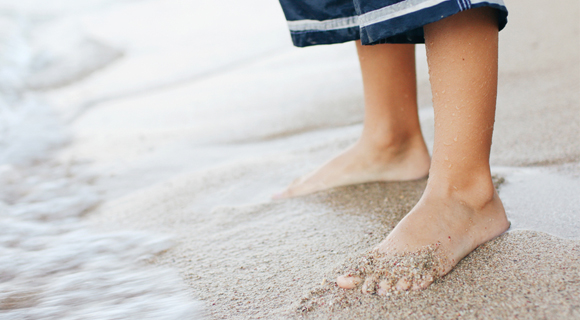
Child safety: Preventing drowning
Water Safety and Drowning Prevention: Get the Facts
Did you know? An infant or child can drown in as little as one inch (2.5 cm) of water or another type of liquid.
So, take careful note of the following recommendations, which can help keep your child safe from drowning hazards.
- Stick around. Never leave babies or young children alone in the bathtub, a swimming pool, or a wading pool. If a baby slips or rolls and lands facedown, he or she may not be able to turn over. Bathing seats and flotation devices are an added layer of protection, but they are not substitutes for your attention.
- Be careful not to leave babies and young children alone around filled buckets, such as the 5-gallon buckets often used for cleaning. Always empty buckets immediately after use, and keep them out of a child’s reach. The same tall, straight sides that keep water from splashing make it difficult for infants and young children to escape if they’ve fallen in.
- Here’s one you may appreciate: Leave the toilet lid down. And keep young children outside of the bathroom without your direct supervision. The toilet isn’t a toy. In fact, it can serve as a drowning hazard, especially for children younger than 3. Should a child fall in headfirst, he or she may not be able to get out alone. Try placing a latch outside of a child’s reach on the bathroom door, for privacy and peace of mind.
- Don’t leave open containers that can accumulate liquid unattended around the yard or the house. As liquid levels rise, so will the threat that they pose to young children and babies.
- Empty coolers after use, and keep the lids shut. Then, as an extra precaution, store them outside of your kids’ reach.
- Watch children very closely when outdoors, especially if there are wells, open postholes, and irrigation or drainage ditches nearby. To help make your watchdog job a little easier, fill holes and install fences or other barriers to protect your little one. If you have a pool, it needs to have a cover that locks, as well as a surrounding fence. If outdoor activities are on the agenda, your child should never be out of sight. Think of it as a way to take that “never miss a moment” mentality to a whole new level.
- Children and fast-moving water don’t mix. Do not risk it.
Take time to teach swim safety
Because you can’t be a watchdog forever, it’s important that your child learns the basics of swimming and swim safety.
- Help your children dive into water-related activities by introducing them to the four key rules of swimming:
- Always swim with a buddy for added fun and safety.
- Don’t dive headfirst into unknown waters. In these cases, feet-first is always the way to go.
- Save the roughhousing for another time. Pushing or jumping on others while in the water makes it difficult for them to stay afloat.
- Always be prepared for an emergency. Children should recognize when it’s time to call for an adult or 911.
- While inflatable swimming aids (such as water wings) are helpful, they are not 100 percent reliable. Remain diligent, as swimming aids can deflate, or children can slip out of them. Also, children who have grown familiar with these devices may develop bad habits, like jumping into pools on impulse–with or without the devices.
- As a parent, learn how to swim yourself. You don’t have to be the next Michael Phelps, but if there is a water emergency, chances are you will be the first on the scene. Acquainting yourself with various rescue techniques is a smart way to be proactive.
- Don’t stop at swim lessons. While they are helpful, they do have a way of providing a false sense of security. If it hasn’t already been said enough: Keep an eye on your child at all times.
- Think of both public and private pools as one and the same. In either situation, the same swim safety rules apply.
This information does not replace the advice of a doctor. Healthwise, Incorporated disclaims any warranty or liability for your use of this information. Your use of this information means that you agree to theTerms of Use. How this information was developed to help you make better health decisions.
To learn more, visit Healthwise.org
© 1995-2015 Healthwise, Incorporated. Healthwise, Healthwise for every health decision, and the Healthwise logo are trademarks of Healthwise, Incorporated.





